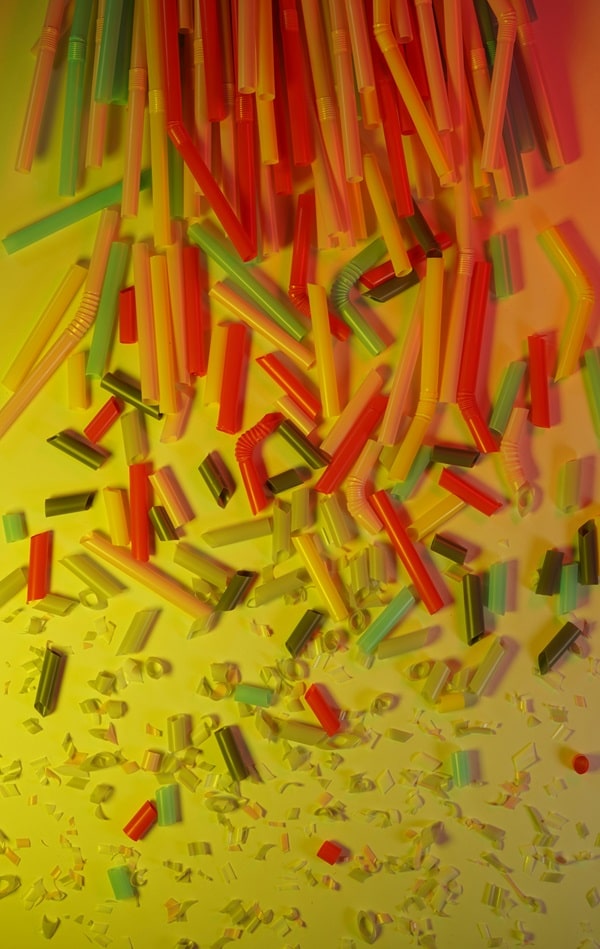From Macro to Micro: The Microplastics Crisis

Introduction:
Microplastics, tiny particles less than 5 millimeters in size, have emerged as a global environmental concern due to their pervasive presence in ecosystems and potential impact on both the environment and human health. These microscopic fragments result from the breakdown of larger plastic items, such as bottles and bags, as well as from the shedding of microbeads in personal care products. The alarming ubiquity of microplastics, found in oceans, rivers, soil, and even the air, has spurred extensive research to understand their implications and develop strategies for mitigation.
Microplastics pose a threat to ecosystems as they infiltrate diverse environments. In aquatic ecosystems, they can be ingested by marine life, from plankton to fish, entering the food chain. The impact on terrestrial ecosystems is equally concerning, with microplastics present in agricultural soils and affecting plant growth. Furthermore, studies have detected microplastics in the air, raising questions about their potential inhalation and subsequent health effects on humans.


Environmental and Health Concerns:
The persistence of microplastics in the environment is elevated by their resistance to degradation. These particles can absorb and accumulate harmful chemicals, leading to potential toxic effects when ingested by organisms. The transfer of microplastics through the food chain raises concerns about the indirect exposure of humans to these pollutants. Additionally, the small size of microplastics allows them to penetrate biological tissues, potentially causing inflammatory responses and posing health risks.

Do Microplastics Solely Originate from Plastics?

Microfibers: A Silent Contributor

Addressing the Microfiber Predicament:
1. Material Innovation:
– Promoting the development and use of sustainable and biodegradable materials can significantly reduce the release of microfibers. Research into alternative fabrics that are less prone to shedding can help mitigate the impact of microfibers on the environment.
2. Filtering Technologies:
– Introducing filtration systems in washing machines and wastewater treatment plants can help capture and prevent the release of microfibers into water bodies. Innovations like laundry bags with built-in filters are practical solutions for reducing microfiber pollution at the household level.
3. Consumer Awareness:
– Raising awareness among consumers about the impact of synthetic fabrics and encouraging responsible garment care practices, such as using colder water, shorter wash cycles, and specialized microfiber-catching filters, can contribute to minimizing the release of microfibers.

Conclusion:
While plastic pollution remains a critical concern, acknowledging the role of microfibers is crucial for a comprehensive understanding of the microplastic issue. By dispelling the misconception that microplastics solely come from plastics, we can implement targeted strategies to address the microfiber predicament. Through material innovation, filtration technologies, and increased consumer awareness, we can work towards mitigating the environmental impact of microfibers and fostering a more sustainable future.

References:
https://journals.plos.org/plosone/article?id=10.1371/journal.pone.0233332
https://www.nps.gov/articles/000/laundry_microplastics.htm
https://australiancotton.com.au/supply_chain/does-cotton-shed-microfibres
https://www.sciencedirect.com/science/article/abs/pii/S0269749116312325
https://www.science.org/doi/10.1126/sciadv.aay8493
Dris, R., Gasperi, J., Mirande, C., Mandin, C., Guerrouache, M., Langlois, V., & Tassin, B. (2017, February). A first overview of textile fibers, including microplastics, in indoor and outdoor environments. Environmental Pollution, 221, 453–458.
Suaria, G., Achtypi, A., Perold, V., Lee, J. R., Pierucci, A., Bornman, T. G., Aliani, S., & Ryan, P. G. (2020, June 5). Microfibers in oceanic surface waters: A global characterization. Science Advances, 6(23).
